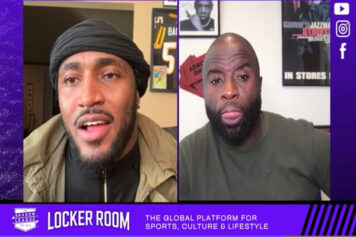Positions.
They are to basketball players like sprinkles are to ice cream sundaes. They define the players that inhibit their places, their spots on the floor. The attributes of who and how a position is filled on the basketball court often determines the course of the player, the game, the win, and the legacies of the players in them. Some fit and some defy. Some are lost and some are found in those very places.
But there is trouble with those definitions. Forwards, guards, and centers play differently from generation to generation. What roles were served in the ‘60s don’t translate exactly to the 21st century. What Bob Cousy was to point guard isn’t what Russell Westbrook is to PG.
Observers, fans, and most importantly, coaches have problems evaluating talent, and it’s often because of those very slots, those five spaces that are inhabited by the chaotic ballet dancers who take up residence within them. Think about why players have false heights? The name of the game of the past is the taller that you are, the closer that you play to the basket, but not always is your height the prime marker.
Often it has worked against players.
Kevin Garnett is 7’1”. Listed at 6’11”, he played power forward for the majority of his NBA career. Dirk Nowitzki was lucky to have Don Nelson coaching, but a guy once listed at 6’11”, who is actually 7’1 ½”, who played forward was a hefty price to pay for Nelson’s rep as a coach. LeBron James is also closer to 6’10” and at least 25 lbs. heavier than his 6’8”, 250 lb. stat line admits, but what coach would feel right about allowing his bigger player to play point guard openly in the starting lineups?
Old habits, strategies, and ideas die hard, but what if it was found that there is more than five roles? What if the guard, the forward, and the center are just titles, just imaginary players? What if the successes of the players can be found in the unseen?
Remember the legend of The Unibrow.
Anthony Davis, NCAA champion, First-Team All-American and the No. 1 overall pick of the 2012 NBA Draft was a guard in high school – a point guard.
After growing seven inches in high school, from 6’3” to 6’10”, he went from Cleveland State recruit to a top-of-the-class Kentucky Wildcat, just from a height change. He’s a power forward/center now, but where does he actually fit? One young man in northern California may know.
**********
His name is Muthu Alagappan. A senior at Stanford University and avid NBA fan, he was able to map data that was collected from all 452 players in the 2010-2011 season and analyze contributions of measured performance from the standard statistics tracked in NBA games, as profiled by Wired. Alagappan found 13 new positions amongst the three macro-positions that the game of basketball has been based in. Thirteen. Ball-Handlers (Offensive, Defensive, Combo, Shooting, Role-Playing), Rebounders (3-Point and Scoring), Protectors (Paint and Scoring Paint), elite NBA Teamsters (First and Second), Role Players, and the enigmatic One-Of-A-Kind.
The possibilities. The diversity. The definitiveness of role. The madness from coaches having to redefine their notions of roles and players.
Coaches, general managers, and scouts already have trouble discerning who is who and what is what. Phil Jackson and Mike D’Antoni, ironically, were always ahead of the curve, looking at skills relative to the players versus the players relative to their heights.
Scott Pippen would never have been a point guard for anyone else beyond Jackson. His trading cards said otherwise, but in The Triple Post (Triangle) Offense, the man was playing PG. Shawn Marion a power forward? Boris Diaw a point-center? D’Antoni was maximizing his assets.
Positions are the difference between careers flourishing and languishing. The Houston Rockets’ Chandler Parsons plays all over the floor; you can’t call him a static small forward, because he does too much and plays everywhere (but his being pigeonholed in college cost him first-round status). Tyreke Evans of the Sacramento Kings went from promising to troubling on-court in less than two years, all because no one can quite figure out how he can help a team win with his skill set. Perry Jones III went from overrated to a draft night steal, based solely on his plummeting value as a lottery pick talent and questionable ability to play the game according to his size.
And it’s bigger than players. There are teams that succeed and fail in player placement. The Oklahoma City Thunder had the great understanding to make their former James Harden the de facto point guard next to Russell Westbrook. The San Antonio Spurs positioned Tim Duncan as a power forward, and he’s become the best ever at his position. The Celtics made Larry Bird their small forward and the Los Angeles Lakers made Magic Johnson their point guard, even though both could play at any other position necessary.
The leaders in player position-typing tend to be the Mavericks and the Suns, today. Both have historically (within the last 10 to 15 years) made significant headway in thinking about marriages of players with skills that compliment in unique, productive ways and not just what is the status quo. From analytics to spread offenses with unconventional lineups and sets, Dallas and Phoenix present themselves as lead anchors in thinking about players differently.
In the case of the Mavs, the Don Nelson years were filled consistently with moderate amounts of lack in orthodoxy, but beyond him, the organization has stood by what can be versus what should be. For example, J.J. Barea, a 5’10” point guard, devastated the Miami Heat in the 2011 Finals as a wing (he’d be an Offensive Ball-Handler by Alagappan’s estimations). The same Shawn Marion that excelled as a four-man in Phoenix was playing that same position in Dallas, after suffering a career tail-off in stints with Miami and Toronto (playing his “normal” spot as a small forward – he’d be One-Of-A-Kind). DeShawn Stevenson did everything he could except jump center and played the most significant season of his entire career (and has since regressed as a Role-Playing Ball-Handler).
The same has followed Phoenix. Boris Diaw as a low-post distributor, slashers like Quentin Richardson and Jim Jackson becoming sole long-distance threats. Even today, Michael Beasley and Channing Frye as three-point launching big men and Jared Dudley, a natural swingman, as an inside-out big man. They’re ahead of the curve.
But not all teams are created equal. Most teams are in a close range of each other when it comes to utilizing talent, but few have failed so prolifically in the present as the Kings have.
From miscasting Travis Outlaw to a wing defender/scorer to indecisively playing Evans as a non-distributing point guard to drafting Jimmer Fredette as the team’s lead guard, the Kings have continually fallen short.
**********
Ralph Sampson was never really a true center, and he paid years later with career-ending leg injuries because of it. The almighty David Robinson is one of the greatest post men ever, but was seen as soft in the pivot – perhaps he would’ve become devastating a stretch-four. Even today, the New York Knicks’ Carmelo Anthony fights the notion that he is more effective as a post player, even though he’s done his best work closer to the basket.
It matters. It all matters, but how might the game have been affected had the roles discovered by Alagappan been utilized by the legends of the past? By the players of the present?
Think of the outliers in the history of the league. Wilt. Russell. Magic. Larry. Michael. LeBron. Oscar. Elgin. Mikan. Rodman. Dirk. Sampson. Barkley. MacAdoo.
Wilt, today, likely would look like Kevin Garnett, a small forward who defended point guards and later evolved into a pick-and-pop center.
Magic still defies historical logic, but is seen as the prototype for today’s LBJ.
Larry was a lighter, slower Magic and still hasn’t been seen in a true evolved form.
Oscar Robertson was Magic’s template.
George Mikan was the foundation for Karl Malone.
Dennis Rodman was Wilt and Walt Bellamy in a Carl Lewis body.
Sampson, were it not for convention, could have been a 7’4 two-guard.
They all defy positions, but their roles took on greater significance, because they couldn’t be pigeonholed. But for the rest, for the present and future participants in the game, misappropriation can mean the end.
It’s not about where players fill the gap, it’s about how. As soon as the gatekeepers of the game embrace the width and depth of play, the maligned and tragic will decrease and the triumphant and exalted will increase.



